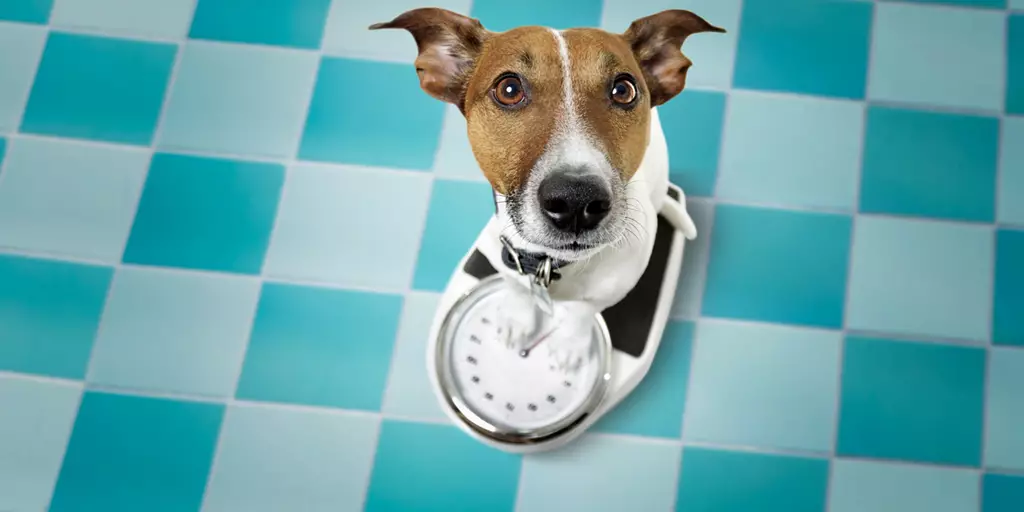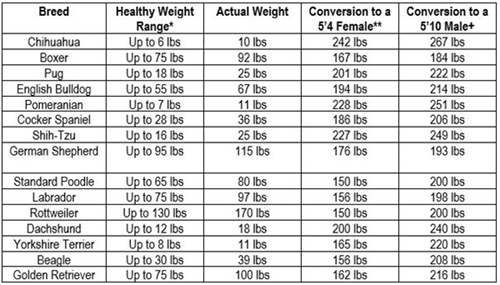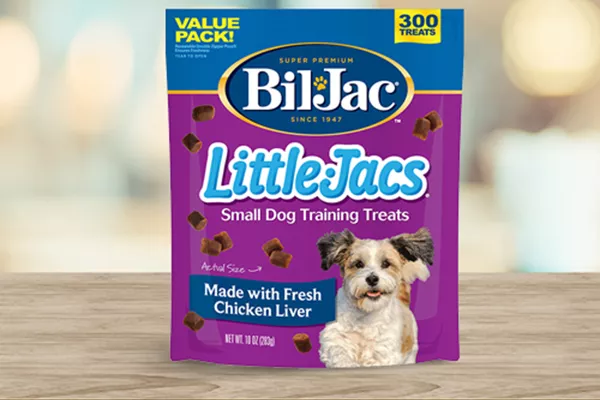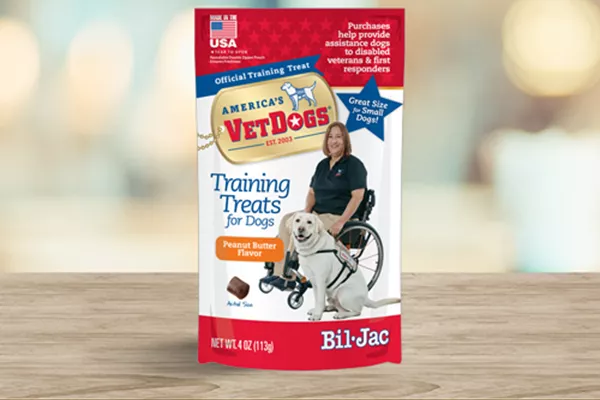10/4/2022
Cute or Pudgy: How to Tell If Your Dog Is Overweight

Do you ever catch yourself wondering if your four-legged friend should lose a few pounds? If you’ve ever referred to your dog as solid, dense, or thought, “…are you just extra cute, or are actually overweight,” you’re not alone.
Though your pudgy pooch’s smile may find a way to win over your heart, you may also want to consider your dog could be overweight. Here are a few ways you can determine if your dog is carrying around a few more pounds than they need and what you can do to keep their nutrition and lifestyle healthy.
How to Tell if Your Dog is Overweight
A study conducted by the Association for Pet Obesity Prevention (APOP) indicates that 56 percent of adult dogs are classified as overweight or obese. According to APOP Founder Ernie Ward, “The most distressing finding in this year’s study was the fact that more pet owners are unaware their pet is overweight.”
It’s important that pet parents are aware of what signs indicate that your dog is overweight and understand the health risks that come with it. These warning signs can help you determine whether you should be concerned and what to do next.
Ribs test
Run your hands around your dog’s rib area. If your dog is at an ideal weight, you should be able to easily feel their ribs. If you discover it is hard to feel your dog’s ribs, this could be a sign your dog is overweight.
Waist test
If you look at your dog from above when they are in a standing position, you should be able to clearly see a defined waist. A dog without an easily visible waistline is most likely carrying a few extra pounds.
Abdominal test
After you look at your pup’s waist, you will want to check out their side profile. Move to look at your dog from their left or right side. Their shape should be wider at the chest and thinner at the abdomen. If you do not see their abdominal area tucked up toward the rear, they could be overweight.
Breathing test
Do you notice your dog excessively panting or frequently losing their breath during physical activity? Trouble breathing could be a sign your dog is overweight.
Physical activity test
Your dog should love playtime! If you’re noticing a lack of interest in physical activities or that they are having trouble moving around, this could be a sign they are dealing with weight issues.
Breed weight test
A healthy weight range for your dog can also depend on their breed and size. In fact, some dog breeds only need to gain a few extra pounds to be considered overweight. For example, a 10 lb. Chihuahua would weigh 242 lbs. if she was a 5’4” woman.
Translating your dog’s weight to a human equivalent may help you better understand the health risks a few extra pounds may cause. Review our weight chart below to understand what weight range is healthy for several common breeds, and how their weight would translate to an average person.

For breeds not listed on our comparison chart and for other guidance on what weight range is healthy for your dog, you can check out average weights in our Breed Library or consult your veterinarian.
What Can I Do if My Dog is Overweight?
Even if your best friend has put on some extra pounds, there are plenty of ways that you can help them maintain a healthy weight. Here are some tips for helping your overweight dog lose weight.
Evaluate your dog’s current diet
One of the best steps pet parents can take to avoiding unhealthy weight gain in their pups is to be intentional about their diets. Are you giving your dog extra “goodies” like table scraps or wet food? Are you feeding your dog according to the feeding guidelines on the bag? Extra calories, even if it is just from time to time, can have a long-term impact on your dog’s health.
The feeding recommendations on a dog food label offer a guide on how to use that product to keep your dog’s weight under control. Monitoring their portions is important for maintaining their health and keeping off any extra pounds.
Although feeding recommendations are a good starting point, you should always continue to monitor your dog’s weight and adjust their food portions accordingly depending on their specific needs. If you have a highly active dog, they may need a little more food each day to maintain their weight. If your dog spends more time on the couch instead of being active, they may need a little less food each day to maintain their weight.
Limit the number of daily treats
Think about the number of treats you give your dog a day. A few treats a day is fine, especially if you are utilizing your treats for training and to reward good behavior. Just remember that treats also add calories to your dog’s diet.
Instead of giving your dog lots of treats every time they do a trick or their business, try to mix in some verbal praise as well. Another way to help maintain healthy weight is by limiting the calories added to your dog’s diet when you do decide to treat or reward them. Some dog chews and treats can be 60-100 calories each. Some great treat options with less than 3 calories per treat are Bil-Jac Little Jacs, Bil-Jac Little Gooberlicious, and America’s VetDogs Training Treats.
Try a reduced fat dog food
If you really want to see your dog reach a healthy weight range, try a reduced fat dog food such as Bil-Jac Reduced Fat Formula. Bil-Jac Reduced Fat Formula has 30 percent less fat than Bil-Jac Adult Select to help control your dog's overall fat and calorie intake.
Adjusting the amount you feed your dog is also an important step. Along with managing your dog’s weight, Bil-Jac Reduced Fat Formula can also help maintain a beautiful coat and muscle tone – along with a delicious chicken flavor dogs love! Your dieting pooch doesn’t have to miss out on tasty treats, either. Bil-Jac Slim-Jacs are the perfect low-fat option for dogs that are watching their waistline.
Help your overweight dog stay active
Although a proper diet is at the core of managing your fur baby’s weight, maintaining regular physical activity based on their breed's needs is another large contributor to their overall health. A few activities to help keep your dog fit may include:
- Taking your dog on daily walks – Depending on their breed, more than one walk a day may help your overweight dog lose weight. This is a great wellness opportunity to keep both you and your dog active, enjoy the outdoors, and, most importantly, bond with your pup.
- Playtime – What dog doesn’t love some extra playtime? Choose a few of your dog’s favorite toys and engage in a game of fetch or tug-of-war.
- Spend time at the dog park – Not only is visiting your local dog park a great way to keep your dog socialized, it’s a great way for them to burn some excess energy running around! If you haven’t ever been to a dog park before, check out our Beginner’s Guide to Dog Parks so you’re in-the-know before you go!
Support your dog’s joints
Extra weight can put extra strain on your dog’s joints. No pet parent wants to see their loveable pal struggle! If you notice your best friend moving less after adding a few additional pounds, explore joint health support options like Bil-Jac BreakThru Joint Health. It’s an innovative, great tasting way to support your dog’s joint health and immune function.
Keep Your Best Friend Happy and Healthy
Managing the right weight and physical activity for your dog’s breed and size is crucial for maintaining their overall health. Knowing how to tell if your dog is overweight can go a long way in helping your four-legged friends live a long and healthy life.
For more monthly nutritional tips, fun facts and exclusive members-only coupons on Bil-Jac Products, sign up for the Best Friends Club.








